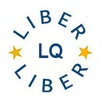The Renaissance in Library Buildings
DOI:
https://doi.org/10.18352/lq.7760Abstract
In the enthusiastic embrace of the digital library, with its anytime, anywhere characteristics, some people have assumed that physical libraries will become obsolete. Yet an examination of the behavior of students and faculty and of recent renovation and construction of academic and research libraries shows that brick and mortar buildings are enjoying a renaissance. Libraries have traditionally supported the housing of collections, reader services, and the staff who manage collections and provide services. These three components continue in the 21st century, but librarians, architects, and users are collaborating to produce elegant and functional designs that reflect new spatial allocations and new purposes. Modern libraries incorporate flexibility and comfort to create an environment that is welcoming and that supports a range of research and learning activities. This paper draws on examples from recent construction and reconfiguration of academic libraries in the United States to illustrate the changing scope of the physical library and the important role it plays in serving as a community hub within a university.Among the examples selected are several relating to the challenges of collection management, including the use of compact shelving and high-density storage facilities. The paper also traces the evolution of spaces from the catalog card era to the present state in which wireless access is a standard feature. Lastly, the author touches on new and expanded roles for librarians and the ways in which design advances the effectiveness of information professionals in fulfilling these new roles.
Downloads
Download data is not yet available.

Published
2004-05-18
Issue
Section
Articles
License
Copyright (c) 2004 Sarah E. Thomas

This work is licensed under a Creative Commons Attribution 4.0 International License.
How to Cite
Thomas, S. E. (2004). The Renaissance in Library Buildings. LIBER Quarterly: The Journal of the Association of European Research Libraries, 14(2). https://doi.org/10.18352/lq.7760





